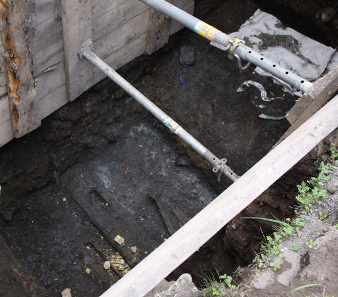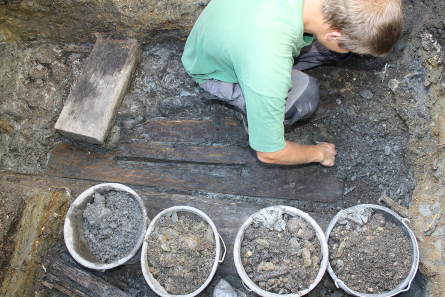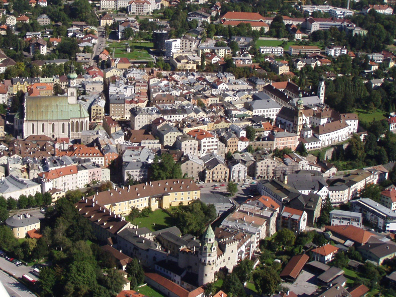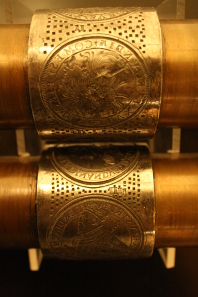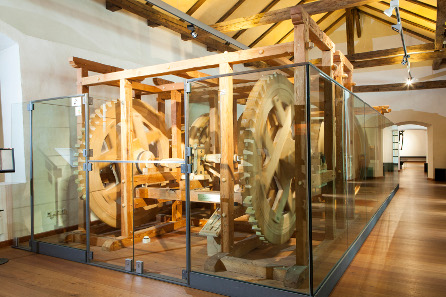by Björn Schöpe
June 25, 2015 – Archaeological excavations at Hasegg Castle in Tyrol (Austria) gave a little sensation: the discovered structures very probably belong to the drive mechanism of the roller coining machine. As the city of Hall, where Hasegg Castle is located, has been preparing its candidature for the prestigious title of UNESCO world heritage site, this finding comes just in time. In respect of the finding’s particular relevance further investigation was announced and the UNESCO candidature has been temporarily withdrawn until reliable results will be at hand.
Sensational finding at Hasegg Castle – probably the rest of the drive mechanism of the historical roller coining machine. Photograph: Stadtmarketing Hall.
The excavation became necessary in the course of construction work after a water damage in the museum. Nobody, however, had expected such a discovery. ‘Until now there had been no archaeological proof for an industrial use in this place – therefore, this was a real surprise for all of us’, states Andreas Ablinger (Münze Hall).
The archaeological finding requires a revision of the candidature for UNESCO world heritage site. Photograph: Stadtmarketing Hall.
Officials explained that this finding may decisively improve Hall’s position to become a UNESCO world heritage site. For that reason, of course, it must be included in the application material although that means that the whole process will take much more time than expected.
Hall’s historical centre is the biggest intact of its kind in western Austria. Photograph: Stadtmarketing Hall.
In the 15th century the guldiner, and hence the thaler was created in Hall in Tirol and the town boasts still a beautiful and well preserved historical centre.
Detail of the roller coining machine. Photograph: TVB Hall-Wattens.
The first actually operating industrial minting with a roller coining machine was developed in Hall in Tirol.
After ten years of research, in 2003, Werner Nuding was able to construct this working reconstruction of a roller coining machine in approximately 4,000 hours. Photograph: TVB Hall-Wattens.
This technology soon spread out over the whole world. The memory of this really historical event is perfectly presented in the local museum at Hasegg Castle.
You can find more information on Hall in Tirol on the town’s official website.
Here you can find further information on UNESCO World Heritage sites in Austria.
Ursula Kampmann once visited Hall in Tirol and wrote a vivid article on her trip.
In autumn 2012 Hall in Tirol hosted a congress at Hasegg Castle on the town’s role in the course of how the roller coining machine was invented and propagated. You can read an abstract of this event here.





